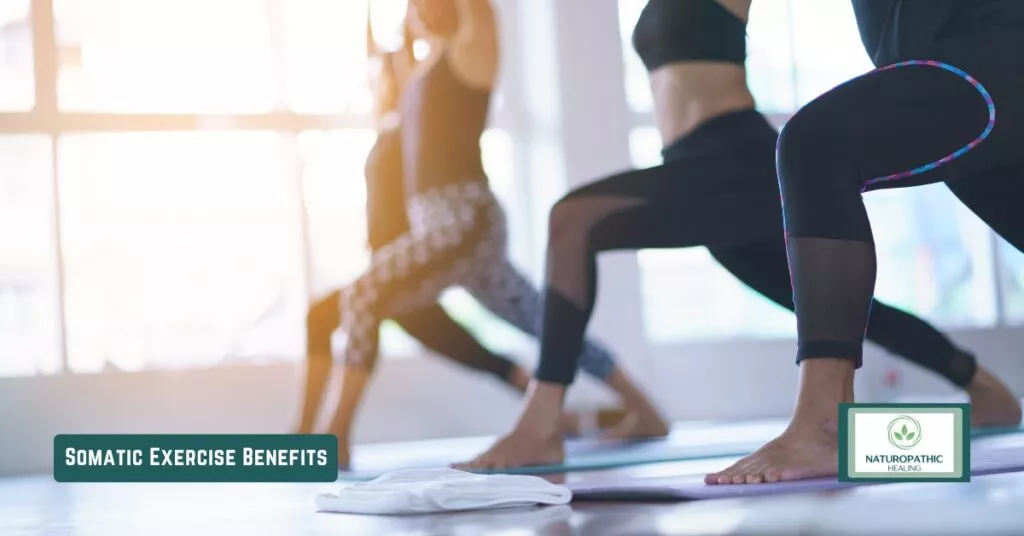Somatic exercises involve the conscious effort to connect with the body and increase awareness of movement patterns. These exercises aim to improve flexibility, strength, and overall physical function. As someone who has struggled with chronic pain and stiffness, I have found somatic exercises to be an effective way to release tension and improve my mobility.
Somatic exercises can be done in a variety of ways, including through yoga, Pilates, and other movement practices. However, they can also be done as standalone exercises that focus specifically on body awareness and control. By engaging in somatic exercises regularly, individuals can become more attuned to their body’s needs and better understand how to move in a way that promotes overall health and well-being.
Whether you are an athlete looking to improve performance or someone simply seeking relief from chronic pain, somatic exercises can be a valuable addition to your wellness routine. By taking the time to connect with your body and engage in intentional movement, you can improve your physical function and overall quality of life.
Table of Contents
What Are Somatic Exercises?

Somatic exercises are a type of movement practice that emphasizes the connection between the mind and body. These exercises are designed to help individuals release tension and stress from their bodies, improve their posture, and increase their range of motion.
As someone who has practiced somatic exercises for several years, I can attest to their effectiveness in improving overall physical and mental well-being. Somatic exercises involve slow, deliberate movements that allow you to tune in to your body and become more aware of any areas of tension or discomfort.
One of the critical benefits of somatic exercises is that they can be done by anyone, regardless of age or fitness level. They are gentle and low-impact, making them a great option for those who may have mobility issues or chronic pain.
Some common somatic exercises include:
- Body scans: These involve lying down and systematically scanning your body for areas of tension or discomfort. Once you identify these areas, you can use gentle movements and breathing techniques to release the tension.
- Pandiculation: This involves contracting and then slowly releasing muscles in a specific area of the body. By doing this, you can release chronic tension and improve your range of motion.
- Slow, deliberate movements: These can include movements like rolling your shoulders, tilting your head, or rotating your hips. By moving slowly and mindfully, you can increase your body awareness and release tension.
Overall, somatic exercises are a valuable tool for anyone looking to improve their physical and mental well-being. By incorporating these exercises into your daily routine, you can reduce stress and tension, improve your posture, and increase your overall flexibility and mobility.
- Foundation, Somatic Harmony (Author)
- English (Publication Language)
- 92 Pages – 01/28/2024 (Publication Date) – Independently published (Publisher)
Somatic Exercise Benefits

Somatic exercises are a great way to improve your overall well-being. Here are some of the benefits of practicing somatic exercises regularly:
Increased Body Awareness
Somatic exercises help you become more aware of your body and its sensations. By focusing on the internal sensations of your body, you can learn to identify areas of tension and release them. This increased body awareness can also help you improve your posture and alignment, which can lead to better movement patterns and reduced risk of injury.
Reduced Stress and Anxiety
Somatic exercises can be a great way to reduce stress and anxiety. By focusing on your breath and body sensations, you can calm your nervous system and bring yourself into a more relaxed state. This can be especially helpful if you’re feeling overwhelmed or anxious.
Improved Flexibility and Range of Motion
Somatic exercises can help you improve your flexibility and range of motion. By releasing tension in your muscles and joints, you can increase your mobility and reduce pain and stiffness. This can be especially helpful if you have a sedentary lifestyle or sit at a desk for long periods.
Enhanced Mind-Body Connection
Somatic exercises can help you develop a stronger mind-body connection. By focusing on your internal sensations and movements, you can become more aware of how your thoughts and emotions affect your body. This can help you develop greater self-awareness and improve your overall well-being.
In conclusion, somatic exercises offer a wide range of benefits for both physical and mental health. By incorporating somatic exercises into your daily routine, you can improve your body awareness, reduce stress and anxiety, increase flexibility and range of motion, and enhance your mind-body connection.
In a review conducted in 2020, somatic exercise was examined as a prospective approach for alleviating chronic pain, with findings indicating promising outcomes from its methodologies.
Recommended reading: Discover what the practice of chi kung can do for you
Somatic Stretches and Exercises to Try

As a somatic exercise practitioner, I have found that incorporating somatic stretches and exercises into my daily routine has helped me to improve my bodily awareness and release tension. Here are a few of my favorite somatic exercises that you can try at home:
Standing Awareness
Begin by standing with your feet hip-width apart and your arms at your sides. Close your eyes and take a few deep breaths, feeling the weight of your body in your feet. Slowly begin to scan your body from head to toe, noticing any areas of tension or discomfort. Take a few moments to breathe into those areas, allowing them to release.
Hang Your Head
Stand with your feet hip-width apart and your arms at your sides. Inhale deeply, then exhale as you slowly lower your chin to your chest, allowing your head to hang heavy. Take a few deep breaths here, feeling the stretch in the back of your neck and shoulders. Slowly lift your head back up to neutral.
The Arch and Flatten
Begin on your hands and knees with your wrists directly under your shoulders and your knees directly under your hips. Inhale as you arch your back, lifting your head and tailbone towards the ceiling. Exhale as you flatten your back, tucking your chin to your chest and bringing your tailbone towards your knees. Repeat this movement several times, moving slowly and mindfully.
Iliopsoas Exercise
Lie on your back with your knees bent and your feet flat on the floor. Place a small pillow or rolled-up towel under your head for support. Inhale deeply, then exhale as you slowly lift one knee towards your chest. Hold for a few breaths, then slowly lower your foot back to the floor. Repeat on the other side.
Carpal Tunnel Exercise
Sit in a comfortable position with your feet flat on the floor and your hands resting on your thighs. Inhale as you spread your fingers wide, then exhale as you bring them back together into a fist. Repeat this movement several times, focusing on the sensation in your hands and wrists.
Incorporating these somatic stretches and exercises into your daily routine can help to improve your bodily awareness and release tension. Give them a try and see how they work for you!
How Often to Do Somatic Exercises

As a somatic coach, I often get asked how often one should practice somatic exercises. The answer is simple: it depends on your goals and lifestyle.
If you’re looking to relieve stress and tension, doing somatic exercises once or twice a week can be beneficial. However, if you’re dealing with chronic pain or injuries, you may need to practice more frequently.
It’s important to listen to your body and not push yourself too hard. Start with a few exercises and gradually increase the intensity and duration as your body becomes more comfortable with the movements.
Incorporating somatic exercises into your daily routine can also be helpful. For example, taking a few minutes to do a simple movement sequence before bed can help you relax and sleep better.
Ultimately, the key is consistency. Whether you choose to practice somatic exercises daily or just a few times a week, make sure you stick to a routine that works for you. By doing so, you’ll be able to reap the benefits of somatic exercises and improve your overall well-being.
- Books, LearnWell (Author)
- English (Publication Language)
- 140 Pages – 03/01/2024 (Publication Date) – LearnWell Books (Publisher)
Somatic Exercise Risks
As with any form of exercise, somatic exercises also carry some risks. However, these risks can be minimized by taking proper precautions and following the instructions of a qualified instructor.
One of the most common risks associated with somatic exercises is injury. This can occur if the exercises are performed incorrectly or if the participant has a pre-existing medical condition that is aggravated by the exercises. To minimize this risk, it is important to start with simple exercises and gradually increase the intensity and duration as the body becomes more accustomed to the movements.
Another risk associated with somatic exercises is overexertion. This can occur if the participant pushes themselves too hard or does not take enough breaks during the session. To avoid overexertion, it is important to listen to your body and take breaks when needed. It is also important to stay hydrated and fuel your body with proper nutrition before and after the exercise session.
In rare cases, somatic exercises can also lead to muscle soreness or strain. This can occur if the participant performs the exercises with improper form or if they do not properly warm up before the session. To minimize this risk, it is important to perform proper warm-up exercises and focus on proper form during the somatic exercises.
Overall, somatic exercises are a safe and effective way to improve flexibility, reduce stress, and improve overall well-being. By taking proper precautions and following the instructions of a qualified instructor, the risks associated with somatic exercises can be minimized.


